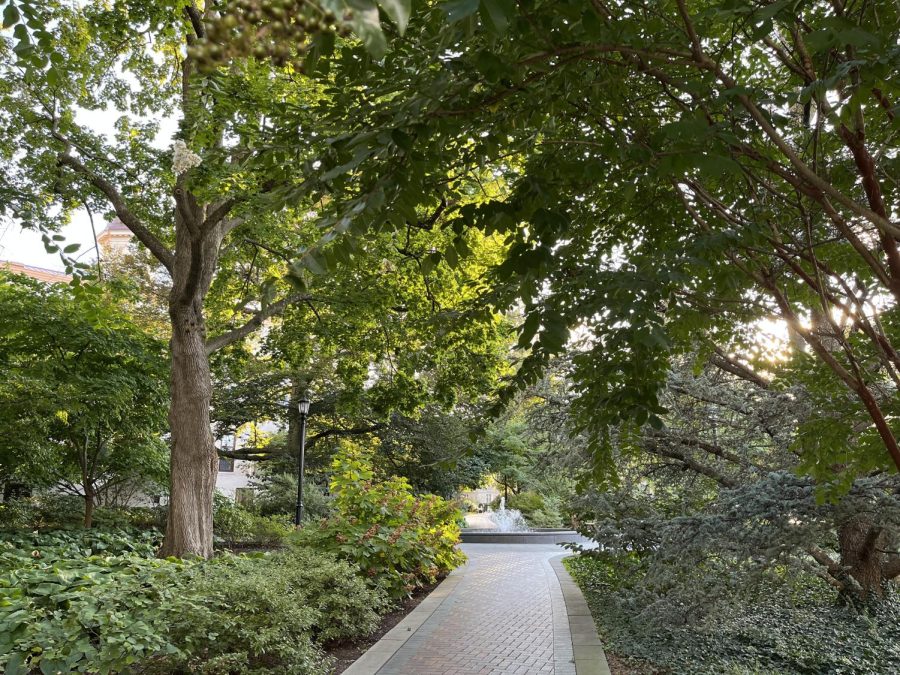Brethren for Squirrels: The Native Plant Crisis
A.J. Fezza / Villanovan Photography
The University hosts much biodiversity across its campus.
September 21, 2022
I found out in my Environmental Catastrophe in Literature course that chestnut trees used to be the staple of American forests. Now, they are almost entirely wiped out by a disease transported here with beautiful foreign trees in the 19th and early 20th centuries. It is incredible to think that millions of impressive, native trees were wiped out rapidly simply due to humans’ desire for unique landscaping from overseas.
It is often difficult to recognize the trees that we see nearly every day. They are not as memorable as animals or insects, yet they are no less alive. Trees and plants are not just spectacles to look at as we navigate our way to and from class. They support entire ecosystems and bring balance to nature.
Native plants are important to the welfare of our ecosystems because they are, well, native. They were designed by nature to grow in this part of the world, and the rest of the natural ecosystem was built around it. When foreign plants are introduced, they break up nature’s happy party.
Native insects that are important for pollination, like bumble bees or butterflies, can only feed on plants that are also native to their ecosystem. Wiping out native plants and exchanging them for foreign species breaks up and erases food sources for native pollinators, affecting other native plant species and the higher food chain.
Villanova’s status as a Tree Campus USA School from the Arbor Day Foundation means that campus is home to a wide variety of impressive trees and plants. When I toured the grounds of Villanova as a prospective student, I could not help but notice how beautiful everything was. The clean brick paths and the large, shady trees drew me to the natural beauty of campus. I must admit, the campus was one of the main reasons I chose Villanova as my home for four years. Since Villanova sits on nearly 260 acres of land, there is certainly a lot of room for landscaping, which the University has taken advantage of. Villanova’s website also states that it has taken initiatives to ensure an environmentally-conscious campus, which is crucial, as a 260-acre tract of land with little to no native plant species would be a hard hit on the native ecosystem.
However, there is always more room for native plants. Is it the University’s responsibility to have even more native vegetation around campus? As long as the University maintains its commitment to sustainability, Villanova can be a role model for other institutions with large properties by its cultivation of the natural habitat on campus. And, more importantly, is it our responsibility to recognize the plants around us and understand the importance of native species?
I strongly answer: yes. This is the world that we have been given to live our lives in. It is the least we can do to help maintain its natural balance.
I encourage anyone who shares this beautiful campus to walk around and take in the nature that lives with us. Wonder with curiosity about a tree, pay attention to a squirrel running or a rabbit hopping and see if there are any butterflies. Appreciating our natural world is an important step in preserving it.


